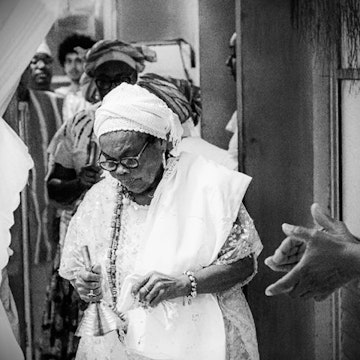The Stone of Xangô
The Stone of Xangô is a cultural icon located amidst the remnants of the lush Atlantic Forest, a witness to quilombola and indigenous resistance in Bahia
The Stone of Xangô is a cultural icon located amidst the remnants of the lush Atlantic Forest, a witness to quilombola and indigenous resistance in Bahia
In addition to its names such as Nzazi, Sogbo, Onça and Godia, it is also known as Pedra do Quilombo do Buraco do Tatu and Quilombo do Urubu. The latter, home to warrior slaves like the leader Zeferina, was strategic in various uprisings against oppression in the city of Salvador, according to historical records.
The Stone of Xangô transcends its geological function by being a symbolic landmark of struggle and resilience. Its surroundings were the scene of mobile quilombos and Tupinambás indigenous settlements, reflecting the multicultural richness and resistance against colonial exploitation. The dispute over nomenclatures highlights not only the diversity of its history, but also the complexity of the relationships between different communities that have shared and shaped this territory over the centuries.
Thus, the Stone of Xangô not only dominates the physical landscape, but also carries with it a cultural heritage deeply rooted in ancestry, continually retold and reinterpreted by those who recognize its importance as a point of historical and spiritual convergence in the city of Salvador.
Although its historical and cultural importance is significant, the sacred monument only became widely known in 2005, when the construction of the Vale do Assis Valente Avenue, part of the Bahia state government's Sanear project, almost resulted in the stone's demolition. The resistance of the Cajazeiras community preserved the site, starting a movement to recognize and protect it. The avenue, built less than five meters from the monument, compromised springs and the presence of water, vital for Afro-Brazilian cults. In 2009, the first political and religious act mobilized society to defend the Stone of Xangô, marking the beginning of a series of cultural manifestations and rituals of resistance. The opening of the avenue triggered urban conflicts and acts of religious intolerance, such as graffiti and deforestation. In 2014, a salt attack on the stone sparked a national mobilization. The efforts resulted in the creation of the Vale do Assis Valente Municipal Environmental Protection Area, the inclusion of the Stone of Xangô Park in the Urban Development Master Plan, the listing of the stone as a cultural heritage site and its recognition as a national geological heritage site. In 2022, the Stone of Xangô Park was inaugurated, bringing to fruition community agendas such as the restoration of the water mirror and the detour of the avenue, ending a chapter of collective struggle for the preservation of the sacred site.









